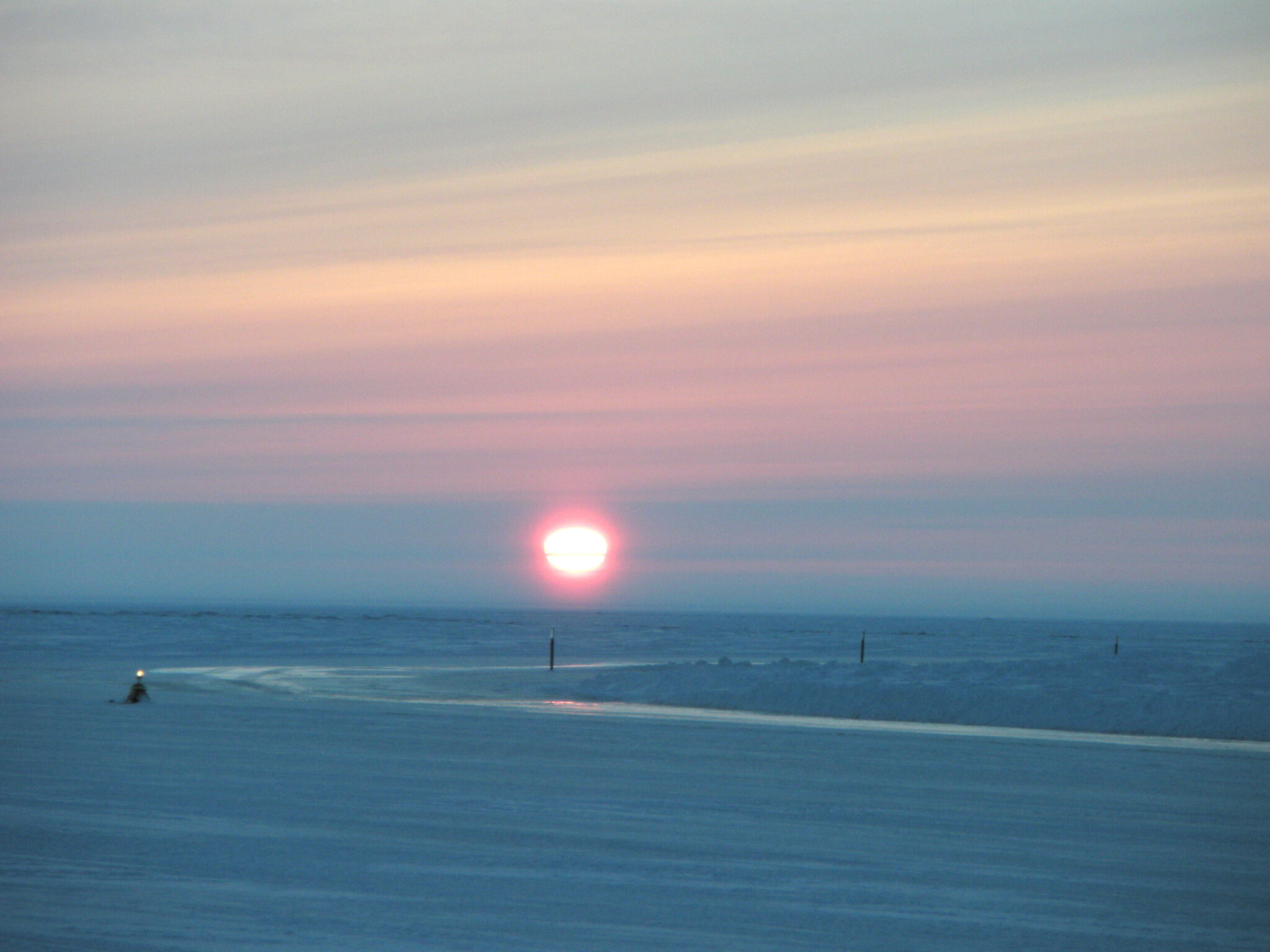Study tracks reductions in time and space for ice roads in the Arctic, including Alaska
"Potential ice roads have shrunk significantly over the past few decades,” the study said

The Arctic’s accelerating warming has shortened the amount of time and the breadth of areas for use of ice roads throughout the far north, scientists and industrial users have said for years.
Now a new study from scientists at Nanjing University in China has quantified those losses for different regions of the Arctic, including Alaska, where ice roads are important seasonal transportation routes in many remote areas.
The study relies on satellite data and evaluates climate, landscape and sea ice conditions as they transformed from 1979 to 2017. The study does not track actual construction or use of ice roads; rather, it tracks the conditions that make it possible to build and use stable ice roads.
The analysis shows that, across the Arctic and throughout the long winter, significant areas have shifted from being suitable for ice road construction to unsuitable. In Alaska, the biggest changes have occurred in December and April, the study found. But even in the months of January, February and March, the period when winter conditions are in their prime, there have been losses of suitable ice road conditions in Alaska, the study said.
“We demonstrated that potential ice roads have shrunk significantly over the past few decades,” the study said. With loss of potential ice road area, later onset and earlier end to cold conditions “all prove that the potential ice road construction time window in the Pan-Arctic is decreasing.
The study is published in the journal Environmental Research Letters.
For Alaska, it evaluated conditions in western and Interior Alaska as well as on the North Slope.
Ice roads of varying types have long been used as seasonal transportation routes in several rural Alaska regions. The frozen Yukon River, for example, has been seen as a naturally created ice road, and the frozen surface of the Kuskokwim River is groomed each winter to serve as a temporary ice road.
Commercially, ice roads are of particular importance on the North Slope, where oil companies use them to avoid damaging the tundra and the permafrost below. Companies typically build ice roads to access exploration and development sites; exploration drilling is conducted in the winter, when the tundra is hard-frozen and snow-covered. In summer, ice roads melt away, and the tundra becomes soft, soggy and difficult for people to travel.
Oil companies and other entities also use the hard-frozen tundra — without ice roads atop it — for winter travel. For tundra travel to be allowed, soil temperatures and snow cover must meet thresholds set by state regulators.
Alaska Department of Natural Resources records show that the tundra travel season on the North Slope has declined markedly since the 1970s, when travel seasons of about 200 days a year were typical, to the present, when tundra travel is allowed for about 130 days a year. In several recent years, conditions in the Brooks Range foothills area of the North Slope never met thresholds required for allowing tundra travel in those zones.
The North Slope’s ice road season has diverged from that pattern slightly. DNR began reporting the ice road season separately from the tundra-travel season starting in the winter of 2003-04. In the first decade of those separate measurements, the length of ice road season fluctuated widely, from a high of 209 in the winter of 2010-11 to a low of 123 in the winter of 2007-08. In the following decade, the seasons become somewhat more consistent, hovering between 161 and 200 days a year, according to DNR reports.
The department’s Division of Mining, Land and Water has refined its tundra travel and ice road regulatory system to help preserve the seasons’ length. There have also been construction adaptations to accomplish that goal, such as prepacking of snow and stockpiling of ice chips on the ground. Nonetheless, the changing Arctic Alaska climate is expected to continue posing challenges to North Slope ice road construction and tundra travel.
This story was first published by Alaska Beacon and is republished here under a Creative Commons license. You can read the original here.